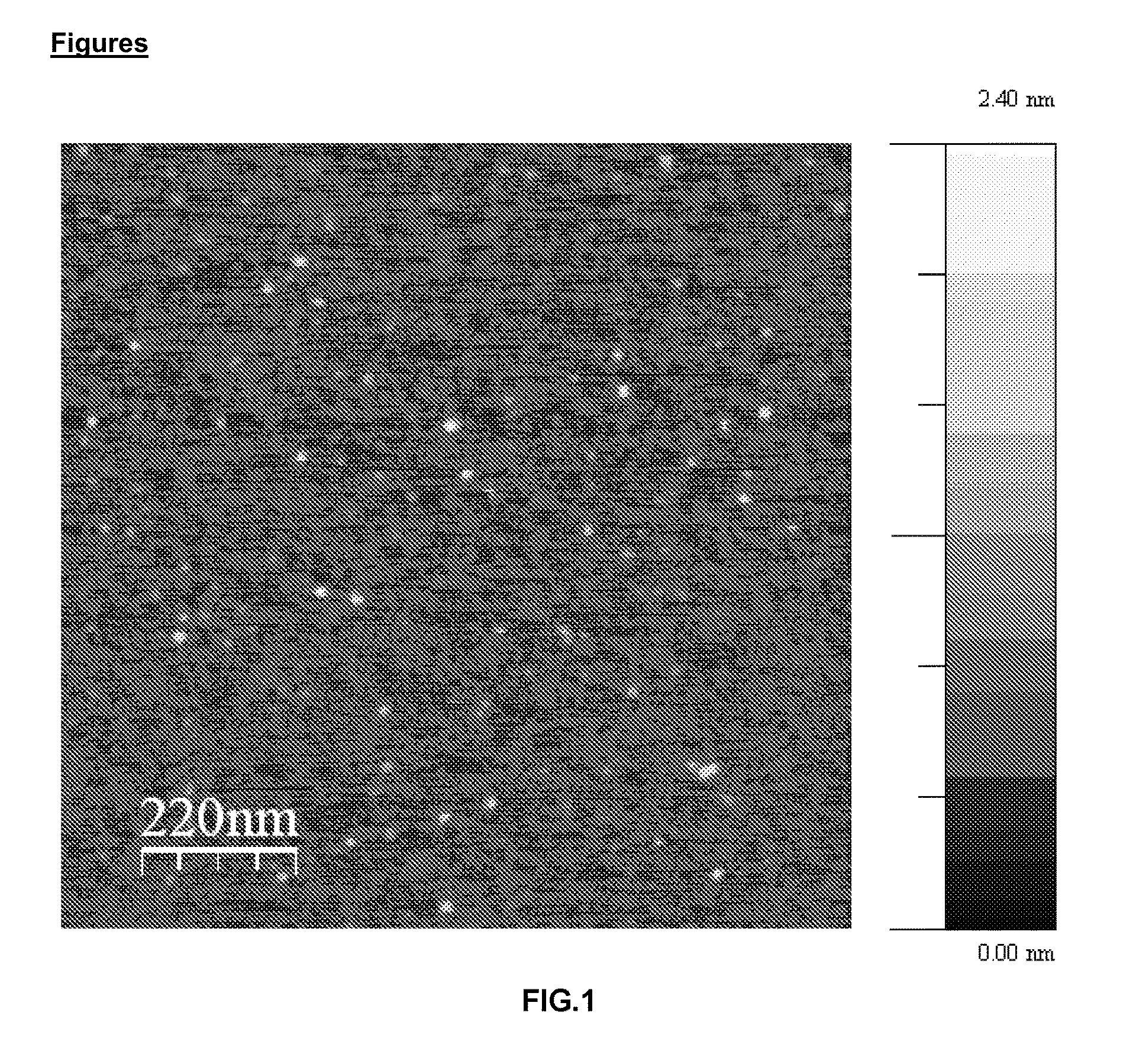PROCEDURE FOR OBTAINING A SUBSTRATE WITH Au NANOCLUSTERS ATTACHED TO ITS SURFACE, AND THE SUBSTRATE AND CATALYST OBTAINED THROUGH THIS PROCEDURE
a nanocluster and surface technology, applied in the field of synthesis procedures of au nanoclusters and catalysts formed by au nanoclusters, can solve the problems of preventing nanocluster aggregation and forming larger particles, affecting the catalytic capacity of nanoclusters, and difficult to implement procedures on an industrial scale. achieve the effect of great versatility
- Summary
- Abstract
- Description
- Claims
- Application Information
AI Technical Summary
Benefits of technology
Problems solved by technology
Method used
Image
Examples
example 1
[0025]The following describes in a non-limitative way an example of the embodiment of the invention.
[0026]The formation of Au nanoclusters occurs at an earlier stage consisting of ultrasonication (submitting to ultrasound) of an aqueous solution whose solutes are a precursor to Au and a polyelectrolyte. The Au precursor is tetrachloroauric acid (HAuCl4) and the polyelectrolyte precursor is the sodium salt from polymethacrylic acid (PMAA). The resulting solution has a final gold concentration of 0.02 mg / ml. The molar ratio between gold and the PMAA carboxylate groups is 2. The pH of the solution is adjusted to 4.5 by the addition of nitric acid (HNO3), and the oxygen dissolved in the solution was eliminated by bubbling argon gas for 30 minutes. After the oxygen is removed from the solution, it is ultrasonicated for about 20 minutes with a Branson 250D probe sonicator operated at 200 W to form Au nanoclusters. The volume of the solution is 100 ml.
[0027]As a result of this previous sta...
example 2
[0036]Following the same procedure than Example 1 described above, with the only difference that the final stage, the separation of the carbon nanotubes with the
[0037]attached Au nanoclusters on the surface from the solution, is made of differently.
[0038]Starting from the already described final solution obtained with the synthesis process or preparing from this solution another solution or suspension of carbon nanotubes with Au nanoclusters in a solvent such as water, ethanol or any other compatible solvent at a concentration typically 0.5 mg / ml. This solution or slurry is impregnated into the surface of a support material preferably porous, which in this example is formed of a porous ceramic monolith, as an example one of those used in automobile catalytic converters. The final support material is obtained after performing a drying operation to evaporate the solvent, performed for example in an oven at a temperature typically of 60° C. In this case, the material is formed by the p...
PUM
| Property | Measurement | Unit |
|---|---|---|
| Temperature | aaaaa | aaaaa |
| Temperature | aaaaa | aaaaa |
| Fraction | aaaaa | aaaaa |
Abstract
Description
Claims
Application Information
 Login to View More
Login to View More - R&D
- Intellectual Property
- Life Sciences
- Materials
- Tech Scout
- Unparalleled Data Quality
- Higher Quality Content
- 60% Fewer Hallucinations
Browse by: Latest US Patents, China's latest patents, Technical Efficacy Thesaurus, Application Domain, Technology Topic, Popular Technical Reports.
© 2025 PatSnap. All rights reserved.Legal|Privacy policy|Modern Slavery Act Transparency Statement|Sitemap|About US| Contact US: help@patsnap.com


